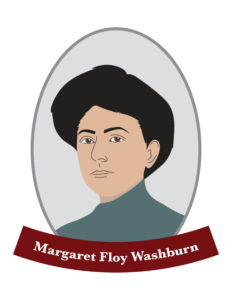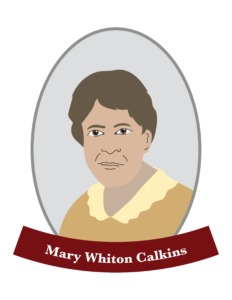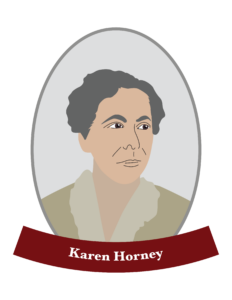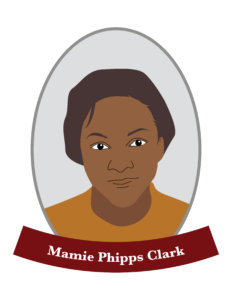The history of psychology is an important area of study for students enrolled in online Applied Psychology programs such as those offered by Florida Institute of Technology. Numerous theorists and practitioners developed concepts and practices that underpin modern psychology and its many subfields. Understanding the historical context and roots of psychology — and the people behind it — is critical to understanding the discipline as a whole.
For decades, men dominated the psychology field from clinical psychology to child psychology to community psychology — white men, in particular. That began to change with the Civil Rights Movement and the Women’s Rights Movement, both of which opened the field up to a more diverse workforce.
That workforce, with more women and people of color, paved the way for a landscape of more socially engaged psychologists. Their work, in turn, became more relevant to the population, which is more diverse than ever before. Along the way, there have been numerous women who served as trailblazers in the psychology profession. The following offers a brief look at some of the most notable among them.

Christine Ladd-Franklin
Born in 1847 in Connecticut, Ladd-Franklin went on to accomplish many “firsts.” She was the first American woman to receive instruction in mathematics and symbolic logic at the graduate level. She was the first American women to do all the academic work needed to earn a doctorate at Johns Hopkins University in 1882, but was denied her degree because of her gender. In fact, she didn’t receive her degree until 1926, four years before her death. Ladd-Franklin is also considered a pioneer in the study of symbolic logic.

Margaret Floy Washburn
While Ladd-Franklin was the first woman to do the academic work necessary to earn a PhD, Margaret Floy Washburn was the first to actually receive a doctoral degree and the second woman to serve as the president of the American Psychological Association (APA). She earned her degree in 1894 from Cornell University. She became a strong influence on comparative psychology and developed her own motor theory of cognition. That theory suggested the body’s movement influences thought.

Mary Whiton Calkins
Mary Whiton Calkins, like Ladd-Franklin, finished all the courses needed to earn a PhD. In her case, the school was Harvard University, but the school refused to grant her doctorate because of her gender. Undeterred, Calkins, who worked with William James (brother of novelist Henry James) among others, went on to do influential work in areas such as dream interpretation and memory. She also established a psychology lab at Wellesley University and became the first female president of the APA in 1905.

Leta Stetter Hollingworth
Born in 1886 in Nebraska, Leta Stetter Hollingworth studied at the University of Nebraska and took a teaching position. She eventually enrolled in Columbia University after moving to New York City, realizing that married women were not allowed to teach in the city school district. She was an active member of the Women’s Suffrage Party, and became the first civil service psychologist in New York City. She specialized in educational psychology, focusing primarily on exceptional children (she coined the term “gifted children”). Also, she conducted research that disproved false theories maintaining women were intellectually inferior to men. Eventually, she became a professor in Columbia’s education department, teaching there until her death in 1939.

Karen Horney
Karen Horney is perhaps most famous for pushing back against Sigmund Freud’s theory that women experience “penis envy,” arguing instead that men experience “womb envy” and much of their actions are driven by the fact they can’t have children. Horney founded the American Institute for Psychoanalysis. She also pioneered work in women’s psychology and became an early advocate for people taking a bigger role in improving their own mental health.

Anna Freud
Anna Freud, daughter of Sigmund Freud, pioneered her own research, particularly into child psychology as the founder of child psychoanalysis. She expanded on her father’s concept of defense mechanisms to develop ego psychology. Her groundbreaking approaches included identifying repression as the main defense mechanism and arguing that the ego held the key to resolving conflict and tension.

Mamie Phipps Clark
In 1943, Mamie Phipps Clark became the first Black woman to receive a PhD from Columbia University (and only the second Black Columbia PhD graduate overall). She went on to develop the Clark Doll Test, which helped research children’s attitudes about race, and dedicated much of her life to improving psychological services for minority children. She and her husband, Kenneth Bancroft Clark, were very active in the Civil Rights Movement. Among their contributions was forming the Northside Center for Child Development in Harlem.

Mary Ainsworth
Raised and schooled in both America and Canada, Mary Ainsworth did groundbreaking research on attachment styles between children and parents and the importance of healthy childhood attachments. Her work also explained how such attachments impacted people’s behavior in their adult lives.

Inez Prosser
Inez Prosser was the first Black woman to earn a PhD in Psychology in the United States. Born in Texas, Prosser earned a master’s degree from the University of Colorado in 1927 because Texas did not allow women to earn graduate degrees in the early 20th century. Prosser eventually entered the doctoral program at the University of Cincinnati, conducting research that compared academic outcomes for Black school children in segregated and mixed schools, finding they did better in schools with a racially mixed student population. Prosser died in a car accident when she was 38 years old, only a year after earning her doctorate.
Looking Toward the Future for Women in Psychology
Despite the impressive accomplishments of these and many other famous women in psychology, more must be done to achieve gender parity in the field. Research demonstrates inequities in female representation in areas like academic publishing as well as persistent pay gaps between women and men in the field.
For people of all genders interested in advancing their education and entering the psychology profession, these are issues to study and deconstruct. Women have fought hard to make important contributions to psychology, but the evolution of the profession is ongoing.
Learn more about Florida Tech’s online Applied Psychology programs.